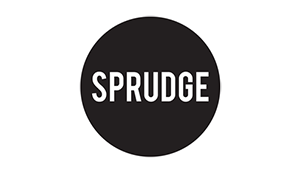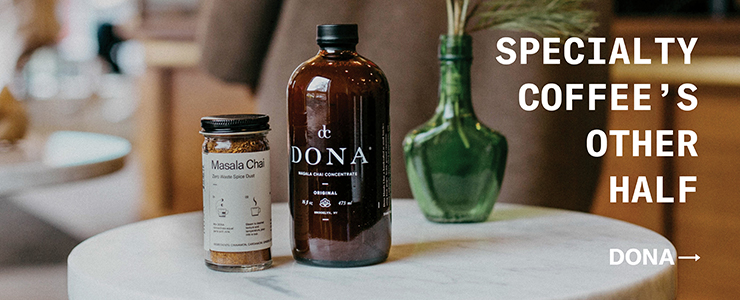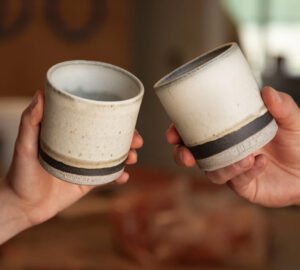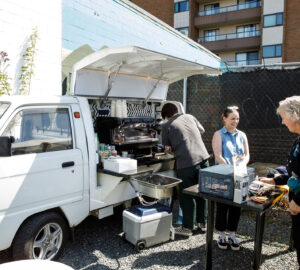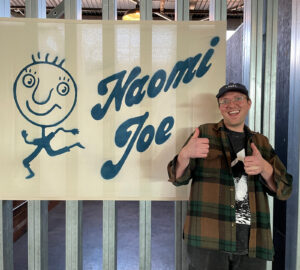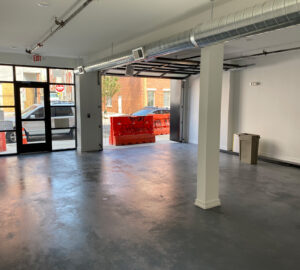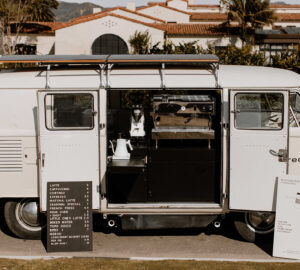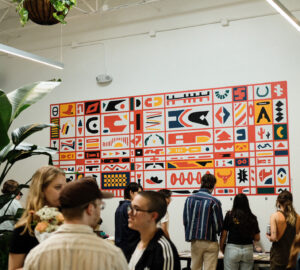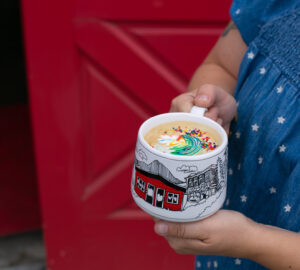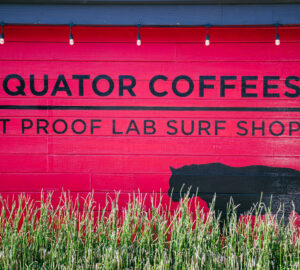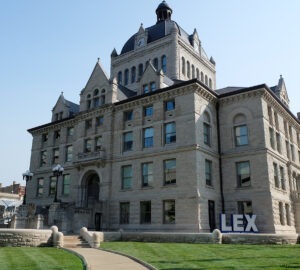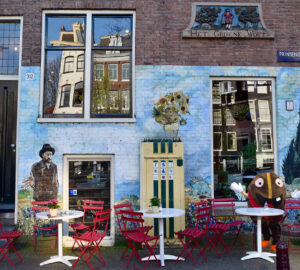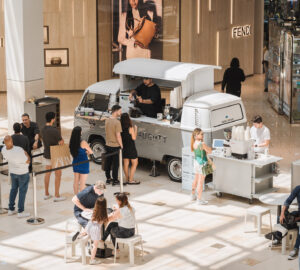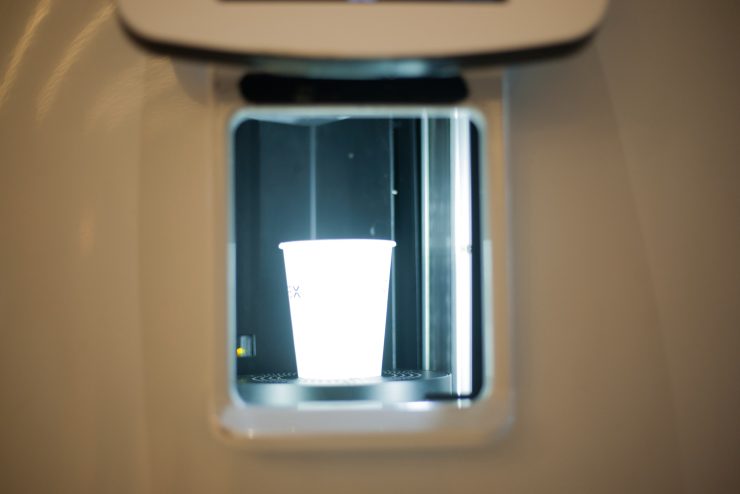
When we talk about “what’s next” for coffee, rarely does that conversation center on the barista. They are the unchangeable constant across coffee in all its forms—a living, breathing human who manages the machines, the “mano” in the “mano, miscela, macchina” upon which the espresso tradition was built. A human, standing behind a machine, waiting to serve coffee to the world: that’s a barista.
At least, it used to be.
Cafe X—started by 23-year-old college dropout Henry Hu—seeks to automate the making and serving of specialty coffee. But unlike, say, BRIGGO, the HAL-like coffee behemoth at the University of Texas we visited in 2012, Hu has created a singular, multi-articulate robotic arm to do the work of mankind. Equal parts auto factory crane and the spindly arm you’d use to pull stuffed animals from an arcade machine, Hu’s robo-barista is scary smart, and it’s part of a trend that seeks to rewrite the rules of coffee service as we know it.
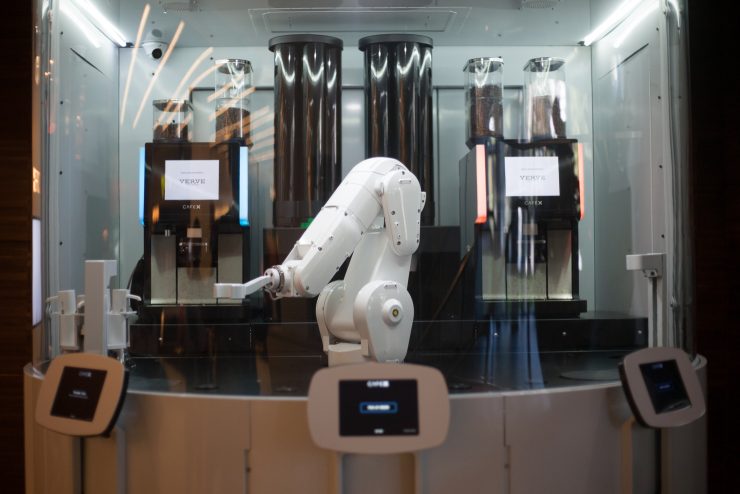
The San Francisco location of Cafe X (the other one is in Hong Kong) is tucked into a dimly lit alcove near a frozen yogurt stand and the stairs on the bottom floor of the Metreon shopping center. A medium-sized fiberglass enclosure encircles the robotic arm and its necessary accoutrements. The only human presence is a cheery Cafe X-employed attendant, there to assist you in the process and soften the strangeness of ordering your coffee from a robot.
You have two options: order the coffee through the touch screen, or download the Cafe X app and order through your phone. My cheery attendant—a sort of sherpa through the uncanny valley—explained that their app functionality allows customers to order while on their way to Cafe X, assuring prompt delivery of the finished drink. I chose to download it and was quickly ordering a flat white built on Verve Coffee Roasters espresso.
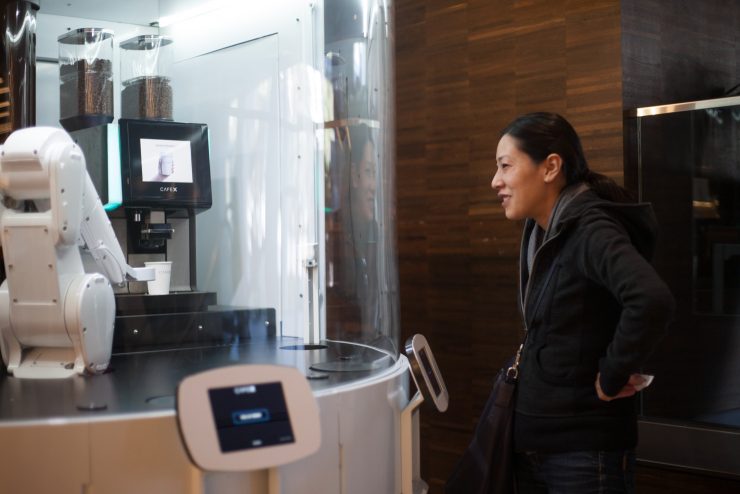
There before me lay the robot arm, swinging gracefully around its small workstation—grabbing a cup, placing the cup under one of the two espresso machines, and waiting to receive a union of espresso and milk. When the drink is done the machine places it off to the side and you sidle up to the touchscreen, tap in a code sent to your phone, and the coffee descends down a circular elevator into an LED-lit receiving area.
It is, quite frankly, the entire process of purchasing a coffee beverage with the human aspect left on the cutting room floor. The machine does its work without emotion, or error, or expectation of compensation. It is servile and efficient as only a programmed device can be.
During my experience, a few other curious customers approached the robot. Some laughed nervously, others snapped photos, but for the most part they stood quietly, in awe of automation at work. The coffee itself was good—the milk smooth and not terribly hot, the shot of espresso thick and flavorful. My flat white was a drink that could’ve been made by a living, breathing human, and a skilled one at that.
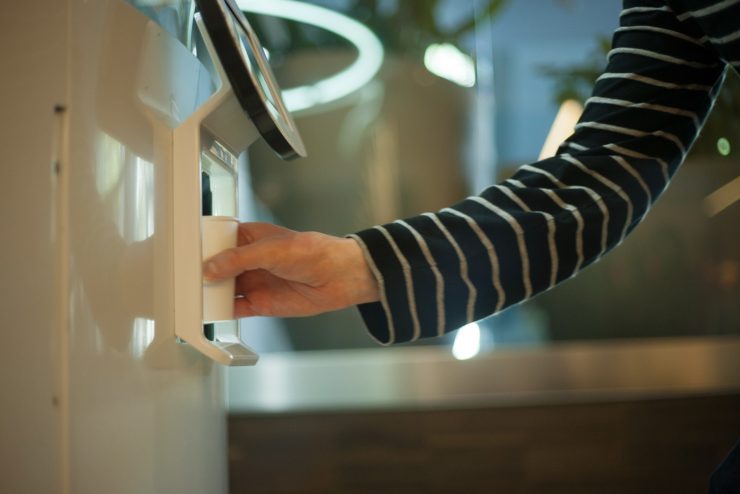
The coming rise of automation is a hot topic right now, driven in part by the rush towards driverless cars—Google and Uber are currently at war over what this looks like next, and how to take it to market. Automation threatens millions of jobs around the world—especially manufacturing jobs—and may very well strike a staggering blow to the fabric of Western capitalist society. If robots take our jobs, who pays taxes? Where does the money go, but back up to the chain to rulers and owners of these robots?
Will our children watch robot barista competitions? Do androids dream of electric flat whites?
For his part, Henry Hu told Forbes Magazine that his intention for Cafe X was simply to “save money”—by his own approximation, the cost of the robot will be far less than a full cafe build-out. He’s right, of course, and that means passing the savings on to you. Drinks from Cafe X already run few dollars leaner than most coffee shops—lattes are $2.95, shots of espresso just $2.25, and this is in the middle of San Francisco, where coffee drinks easily run $4-6 in many cafes. In other words, this is a cheaper, arguably more efficient way of getting caffeine from a machine to your mouth. There was no line when I visited—who knows how the robot handles a morning rush, but I doubt he’ll be much for banter.
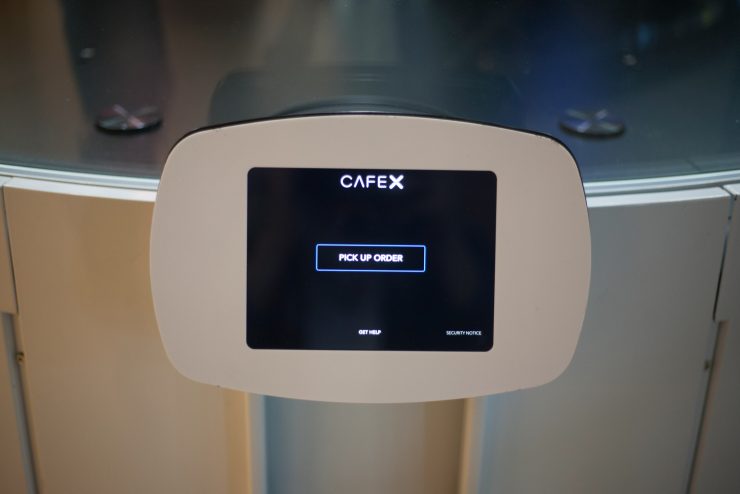
I found myself drawn to the cheery attendant, the lone human whom I could share my experience with. I sought normalcy, something akin to the café experience I was used to. But, if efficiency and automation are the goals of Cafe X, then inevitably humans will be phased out of the experience. We’re pretty inefficient as a species, after all—a bunch of loss leaders eating into the profit potential of a fully automated flat white production Borg, designed to get some as-yet-unagreed-upon combination of milk and espresso into your gullet for credits as soon as possible.
But what of our society? What of coffee as an employment opportunity for real living humans? Will history judge the likes of Henry Hu as a real-world version of Miles Dyson, the fictional (probably?) Director of Special Projects at Cyberdyne Systems who, while just doing his job and increasing project efficiency unknowingly brought about the human-robot apocalypse depicted in The Terminator films.
However, in writing this article, it dawned on me that there may be hope for us yet. The one human you can’t pull out of this equation is the consumer—I’m the one depositing credits, after all, and I can spend my money how I wish. And so it stands to reason that I go to my corner coffee shop ostensibly to get a cup of coffee in the morning, but I also go because I enjoy chatting with my barista; knowing what they’re reading, or who they’ve been dating, or if that dreadful regular we all wish were a little less regular has been back in recently. This human interaction makes the coffee taste better. It’s good for my brain. It’s a UI quirk in this vast human public beta we call life, something that draws us to one another to connect, talk, socialize, fall in love, and pick fleas off each other’s fur. Perhaps it’s a design flaw; perhaps it’s our species’ greatest triumph.
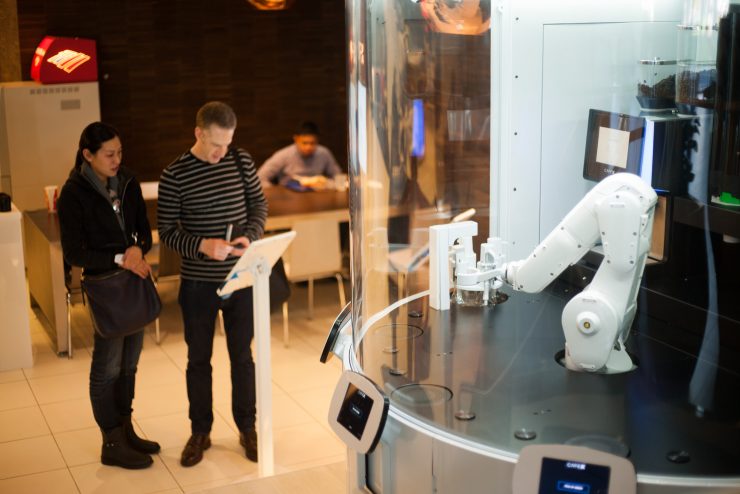
Automation is inevitable, but we can at least hope it’ll be in line with the core values of whatever is being automated. Serving coffee is more than just getting a beverage into a customer’s hands immediately for maximum profit. It’s about interaction, an engagement between people. It isn’t always perfect, and it isn’t always fast, but it’s satisfying in a way that’s hard to quantify until that moment you watch a robot do the same damn thing, for less money, and *still* you want to have a chat.
Cafe X proves that a robot can make a good cup of coffee, but it also, at least to this writer, proves how much is sacrificed when we aim for efficiency over humanity. If fast, consistently delicious coffee, means stripping the barista out of my cafe experience well, then, it doesn’t seem much like the coffee experience anymore. Maybe we’ll all be issued Soylent x Sudden rations in tomorrow’s New Frontier, judiciously pre-mixed by robots too busy to gossip. Or maybe that’s not really what humans want from a cup of coffee, or a cocktail, or a taxi ride. Maybe deep down we want all the inefficiency, the politeness, the imperfect small talk—hell, maybe we even need it, so wired for social interaction are our human brains.
To quote the great philosopher Dr. Ian Malcolm, “Your scientists were so preoccupied with whether or not they could, they didn’t stop to think if they should.” Robot coffee is coming—it’s already here—and it’s just one more bit of reckoning that we, our children, and our children’s children will face in the decades to come.
Meanwhile, you can find me at the coffee bar, enjoying a minimally efficient but highly engaging experience, and leaving a tip.
Noah Sanders (@sandersnoah) is a Sprudge.com staff writer based in San Francisco, and a contributor to SF Weekly, Side One Track One, and The Bold Italic. Read more Noah Sanders on Sprudge.
Editor: Jordan Michelman.






